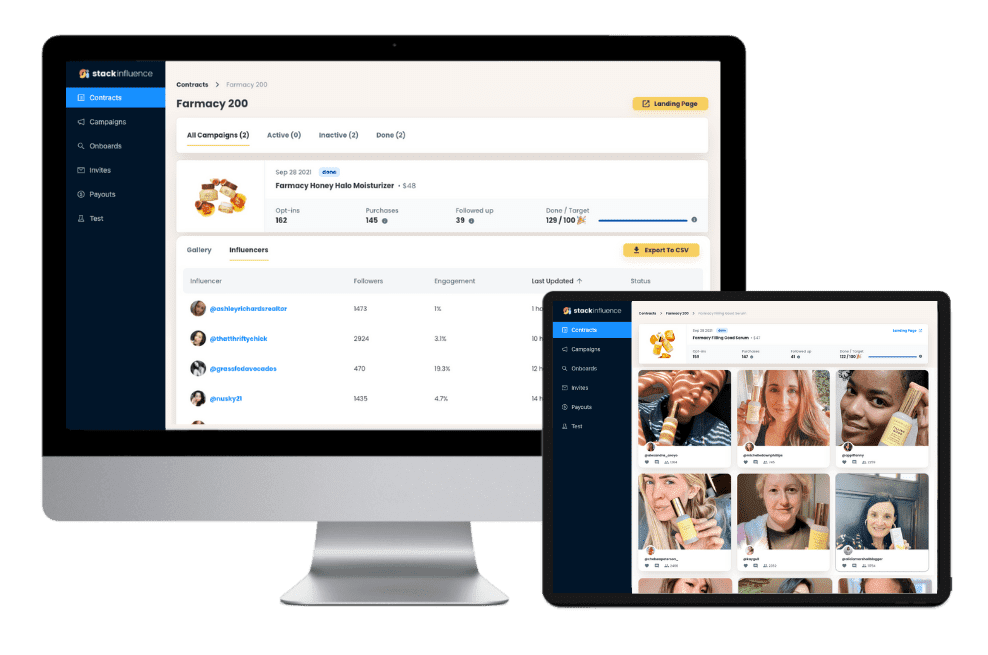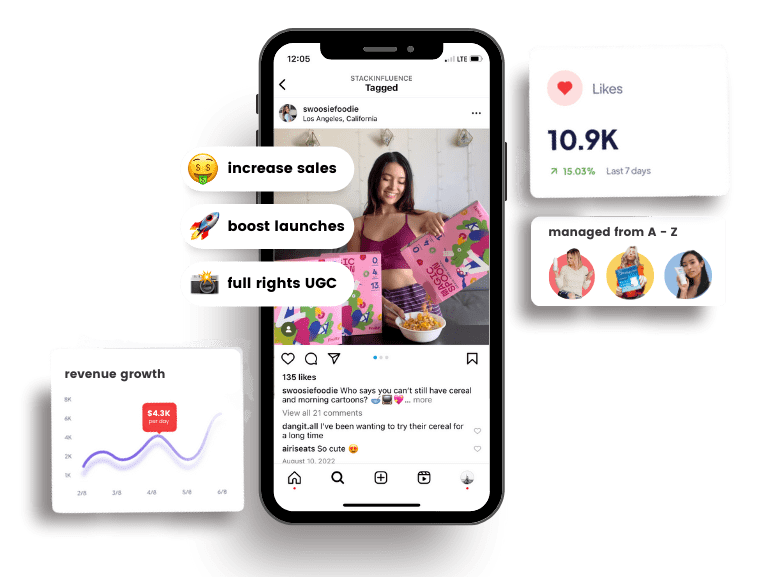Why Brands Are Going All-In on YouTube Influencers in 2025
1st
July, 2025
Influencer Marketing
Amazon Marketplace
Artificial Intelligence
TikTok Tips
In 2025, influencer marketing is booming like never before. Brands big and small are doubling down on YouTube influencers as a cornerstone of their marketing strategy. In fact, for the first time, more than half of U.S. marketers plan to leverage YouTube for influencer campaigns this year. Why the sudden gold rush toward YouTube creators? The short answer: unmatched reach, engagement, and authenticity. Brands are seeing record ROI from YouTube collaborations – U.S. influencer spend on YouTube is projected to hit $2.35 billion in 2025, the highest of any platform. From micro influencers driving niche e-commerce sales to viral YouTube Shorts generating billions of views, the platform has become an influencer marketing powerhouse.
In this blog, we’ll break down the key reasons brands are going all-in on YouTube influencers in 2025. We’ll explore how YouTube’s huge audience, high trust factor, built-in shopping tools, and army of content creators (from nano to mega) are reshaping digital marketing. Whether you’re an Amazon seller looking to boost product reviews or a global brand seeking younger audiences, YouTube offers unique advantages that are hard to ignore. Let’s dive into why YouTube influencer marketing is where everyone wants to be – and how you can make the most of it.
The Rise of YouTube Influencer Marketing in 2025
YouTube isn’t a new kid on the block – it’s a 20-year-old platform – but it’s experiencing a resurgence in influencer marketing. Recent data shows brands are pouring more budget into creator partnerships across social media, with YouTube emerging as a primary beneficiary. Global influencer marketing spend is projected to reach $32.5 billion in 2025, and YouTube commands a significant slice of that pie. In the U.S. alone, influencer spending jumped 23.7% last year and will top $10.5 billion in 2025. Marketers are fully committing to influencers, upping budgets despite economic uncertainties. In fact, 80% of brands maintained or increased their influencer marketing budgets in 2025, with nearly half increasing spend by over 10%. This surge is driven by one clear insight: influencer campaigns work.
YouTube stands out as the new powerhouse in this landscape. According to Emarketer, YouTube now draws more influencer dollars than Instagram or TikTok, thanks to its stability and scale. Marketers have taken notice of TikTok’s volatility (with ban threats in the US) and are hedging bets by shifting to YouTube’s more predictable platform. “Even prior to TikTok’s troubles, the conversation was growing around YouTube… YouTube is quickly becoming the place to be for brands and creators,” notes Jasmine Enberg of Emarketer. In other words, brands are going “all-in” on YouTube influencers not by chance, but by choice – they’ve seen the results and they want more.

Unlock the Power of Micro Influencers and Elevate your Brand Today!

Massive Reach and Lasting Content on YouTube
One of the biggest draws of YouTube is its sheer audience size and content longevity. Every month, over 2.5 billion people log into YouTube, making it the world’s second-largest social network (only Facebook is bigger). Viewers across all age groups flock to YouTube for everything from entertainment to education. The platform’s longevity (founded in 2005) means many YouTube creators have been building loyal followings for years, if not decades. Unlike the fleeting fame of some TikTok stars, YouTube influencers often sustain deep relationships with their subscribers over the long haul.
What’s more, YouTube content lives on. Thanks to YouTube’s search-driven discovery and recommendation algorithm, videos can keep attracting views months or even years after posting. A product review or tutorial from last year might still be getting traction today, effectively giving brands evergreen exposure. This long-tail visibility is a boon for marketers. It’s common for a single collaboration video to drive awareness and traffic well into the future, unlike the more ephemeral content on other platforms. Brands who weave themselves into YouTube videos get the benefit of persistent visibility – a huge SEO and awareness advantage in the long run.
And let’s not forget YouTube’s domination of screen time. Viewers worldwide stream over 1 billion hours of YouTube content per day just from TV screens. That’s not counting phones and laptops! The combination of big-screen viewing and long-form content means audiences are deeply engaged (often watching 10+ minute videos, far longer than a TikTok clip). User-generated content (UGC) thrives here – YouTube remains the best place on the internet to find authentic, long-form video content created by real people. For brands, this UGC goldmine is marketing magic: partnering with creators allows you to inject your message into content that viewers actually seek out and enjoy.
Unmatched Engagement and Trust Factor
Having a massive audience is one thing; actively engaging that audience is another. This is where YouTube truly shines. The platform delivers off-the-charts engagement compared to most social networks. Watching a YouTube video is an intentional act – viewers click because they’re genuinely interested – and that translates into meaningful interactions. On average, YouTube creators see an engagement rate around 72.8% for their content, a figure that blows TikTok and Instagram out of the water. (This stat counts a user viewing or interacting with a video as “engagement,” and by that measure, nearly three-quarters of viewers engage. It underscores how sticky YouTube content can be.)
Even on the short-form side, YouTube Shorts are killing it in engagement. YouTube’s answer to TikTok has quickly amassed 90 billion daily views, and boasts a 5.9% average engagement rate, outperforming TikTok’s ~5.7% and Instagram Reels’ 2%. In other words, people are more likely to like, comment, or share a short video on YouTube than on TikTok or IG. The chart below illustrates how YouTube Shorts have a slight edge in engagement, while Reels lag behind:
Short-form video engagement rates by platform (average percentage of viewers who interact).
Why does this matter? Higher engagement means brand messages resonate more. Instead of passive scrolling, YouTube viewers are actively consuming content (often sitting through a 10-minute video, which is an eternity in internet time). They’re also highly receptive to influencer recommendations because of the trust built over those longer videos. Watching a favorite YouTuber try a product feels like a personal recommendation from a friend, not an ad. It’s no surprise that 92% of consumers trust recommendations from individuals (like influencers) over brand ads. That trust translates to real ROI: businesses earn an average of $5.78 for every $1 spent on YouTube influencer campaigns – a staggering 578% ROI. With returns like that, it’s clear why brands are shifting more budget to YouTube creators.
Several factors give YouTube an engagement and trust advantage over other platforms:
- Deliberate Viewing: Users intentionally search for or click on videos, indicating higher interest. Compare that to mindlessly swiping through random posts.
- Long-Form Storytelling: YouTubers can delve into product demos, reviews, or personal stories in depth. This longer exposure builds familiarity and credibility.
- Community Interaction: Many YouTube channels foster tight-knit communities via comments, livestream chats, and subscriber engagement. Brand integrations often get discussed and upvoted, creating buzz.
- Transparent Sponsorships: Influencers usually disclose sponsors verbally or in descriptions. Paradoxically, this transparency can increase trust – viewers appreciate the honesty and still trust the creator’s genuine opinion if the fit feels right.
For brands, the takeaway is clear: a well-matched YouTube influencer can deliver not just eyeballs but true believers. When a tech vlogger raves about your gadget or a beauty guru includes your product in her daily routine video, audiences listen – and they act.
Micro Influencers = Small Creators, Big Impact

Another reason brands are going all-in on YouTube is the rise of micro influencers – creators with a modest but loyal following – and their outsized impact on engagement. In 2025, micro and mid-tier influencers have become the darlings of influencer marketing. 73% of brands prefer to work with micro or mid-tier creators over mega-influencers, finding they offer the best engagement-to-cost ratio. These smaller creators might have 5,000, 50,000, or 200,000 subscribers instead of millions, but their audiences are highly engaged and niche. For brands, that means more bang for your buck: micro influencers often charge lower fees yet deliver higher relative engagement and conversion rates.
Most brands now favor micro and mid-tier influencers (73%) over macro stars. The authenticity and affordability of micro influencers make them ideal partners for many campaigns.
Why are micro influencers on YouTube so effective? It comes down to authenticity and community. A micro influencer feels like “one of us” – an everyday content creator who genuinely loves their topic, be it vegan cooking, budget travel, or smartphone hacks. Their subscriber base, while smaller, is usually a tight-knit community built on trust and two-way interaction. So when the creator recommends a product, it doesn’t come off as a celebrity endorsement; it feels like advice from a knowledgeable friend. That authenticity is marketing gold. As one study noted, followers are far more likely to trust a recurring recommendation from a micro influencer than one-off posts from a big celebrity.
For brands, micro-influencer partnerships also make economic sense. Instead of putting all your budget into one or two mega-influencers, you can partner with a squad of micro influencers across different niches. This diversifies your reach and generates tons of user-generated content. Many Amazon sellers and e-commerce startups take this approach – seeding products to dozens of micro YouTube creators who do unboxings and reviews, rather than paying for one TV commercial. Not only do they get multiple videos targeting various micro-audiences, they also gain authentic UGC (photos, videos, testimonials) to repurpose in their own marketing. In fact, most Amazon sellers prefer micro influencers for product promotions due to their better engagement and affordability. YouTube is an especially popular platform for this because it excels at long-form, trusted reviews that can significantly sway purchase decisions.
- Pro Tip: To efficiently scale these collaborations, brands are turning to micro-influencer platforms (like Stack Influence) that connect companies with everyday creators. This makes it easy to send out product samples, manage dozens of micro campaigns, and collect authentic review content (UGC) at scale. Such platforms help automate the heavy lifting of influencer discovery and campaign management, so even a small e-commerce brand can run a large micro-influencer program with ease.

Unlock the Power of Micro Influencers and Elevate your Brand Today!

Built-In Shopping = From Inspiration to Purchase
A huge selling point for YouTube in 2025 is its built-in social commerce features. The platform has evolved beyond just a video site – it’s becoming a full-fledged shopping destination. Consider these jaw-dropping stats: over 90% of consumers say they discover new products on YouTube. Unlike on some social apps, YouTube viewers are actively searching for product reviews, unboxings, and how-tos before they buy. Google (YouTube’s parent company) has capitalized on this by rolling out YouTube Shopping tools that let users buy products directly from a video or live stream.
What does this look like in practice? A YouTube creator might tag products in their video – say, a makeup vlogger linking the lipstick and foundation she’s using. Viewers can click and purchase without ever leaving YouTube. There are shoppable links in descriptions, product carousels below videos, even live stream shopping events where influencers demo items and viewers can buy in real-time. This seamless integration shortens the funnel dramatically: see product → click → buy, all on one platform. For brands, that means an interested viewer can convert to a customer in seconds, with virtually no friction.
YouTube’s commerce-friendly environment is a game changer for influencer campaigns. It marries the power of influencer persuasion with the convenience of e-commerce. A few notable benefits:
- Integrated Calls-to-Action: Clickable links and “Shop Now” features make it easy for an influencer to drive traffic to a product page. No “link in bio” workaround needed – the path to purchase is right there.
- Curated Storefronts: Influencers can even create their own YouTube merch shelves or curated product collections. This essentially turns creators into brand affiliates, earning commission while brands get sales.
- Live Shopping Events: Brands can partner with YouTubers to host live demos (think QVC-style but interactive). Viewers can ask questions in chat and hit the buy button during the stream. It’s like a fun hangout and flash sale in one.
- Analytics and Retargeting: Because Google’s ecosystem ties YouTube with search and shopping data, brands get robust analytics. They can see how influencer videos drive traffic and sales, and even retarget viewers with ads later. It’s a full-funnel marketing loop.
Crucially, YouTube’s focus on UGC and community enhances social commerce. People buying via YouTube feel like they’re part of the creator’s journey – they saw the product used authentically and heard an honest opinion. This user-generated context gives them confidence to purchase. Indeed, user-generated videos and reviews are often more trusted than polished brand ads. By leveraging influencers, brands essentially get word-of-mouth marketing at scale, backed by YouTube’s e-commerce tech. It’s the best of both worlds.
And it’s not just D2C brands benefitting – Amazon sellers, Etsy shop owners, and traditional retailers are all in on the trend. They send products to YouTubers for review knowing that a single video can both educate customers and instantly drive them to a buy link. Some Amazon sellers collaborate with YouTube influencers who are part of the Amazon Influencer Program (these creators have their own Amazon storefronts and earn commissions on sales). A tech reviewer might do a “Top 5 Gadgets from Amazon” video, featuring your product, and drop an Amazon affiliate link. If viewers buy, the influencer and brand both win. With creators effectively acting as your salesforce, influencer marketing isn’t just about awareness – it’s directly boosting e-commerce sales.
Conclusion is YouTube is the Place to Be
From all the trends and stats, one conclusion is clear: the future of influencer marketing is on YouTube. Brands are going all-in because YouTube delivers a rare combo of reach, engagement, and conversion power that’s hard to match elsewhere. To recap the key reasons brands are flocking to YouTube influencers in 2025.
In short, YouTube has evolved into a one-stop powerhouse for influencer marketing – from awareness all the way to conversion. Brands that recognize this shift are reaping the rewards with higher engagement, more credible marketing, and boosted e-commerce performance. If you haven’t already, 2025 is the year to embrace YouTube influencers as a core part of your strategy. Whether it’s teaming up with a popular tech reviewer or 10 micro influencers in your niche, now is the time to get on board.
As we move forward, expect the line between content and commerce to blur even further on YouTube. The brands that succeed will be those that collaborate authentically with creators, respect their creative voice, and leverage the platform’s features (hello, YouTube Shopping!) to meet consumers where they are. So dive in, experiment with YouTube campaigns, and learn from the vibrant creator community. Your next big growth channel might just be a YouTuber on the rise. After all, in 2025 everyone’s watching YouTube – and savvy brands are making sure they’re part of the story.

By William Gasner
CMO at Stack Influence
William Gasner is the CMO of Stack Influence, he's a 6X founder, a 7-Figure eCommerce seller, and has been featured in leading publications like Forbes, Business Insider, and Wired for his thoughts on the influencer marketing and eCommerce industries.
Want new articles before they get published? Subscribe to our Awesome Newsletter.
stack up your influence
turning creativity into currency
our headquarters
111 NE 1st St, Miami, FL 33132
our contact info
[email protected]
stack up your influence
turning creativity into currency
our headquarters
111 NE 1st St, 8th Floor
Miami, FL 33132


